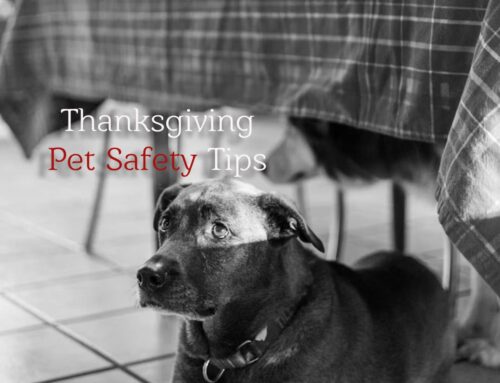Nearly all of us have been there – you’re walking or driving along, minding your business, when you spot a cat or dog on its own with no owner in sight.
As animal lovers, we can’t simply turn a blind eye and go on with our day. So, we stop and check on the little guy or girl and immediately think, “What should I do?”
Although each case is different, there are some best practices that you should always consider when you decide to take action.
1. Caution & Containment
The first priority is always your own safety. If an animal seems aggressive, do not attempt to capture them yourself. Instead, call emergency services or a reliable pet rescue organization to intervene. If the animal does not impose a danger, then you can attempt to calmly coax it to you with a gentle voice and pet food. Once they’re close and will allow you to touch them, dogs should be put on a leash and cats should be put into a carrier.
2. Attempt to Identify
Once you have the animal, check for a tag that may have the owner’s contact info. If there’s no tag, then you should take them to a local shelter or veterinarian to be scanned for a microchip. When scanned, a chip will immediately return the owner’s contact info so that you can get the pet home.
No chip present? It’s still a good idea to alert shelters and vets in the area, and even send out a photo. When people lose a pet, those are the first places they’ll check to see if anyone has brought in their furry friend. You may also want to post in community groups on Facebook as this is another good way to reunite a lost pet with its owner.
3. Isolate & Protect
If you bring the animal to your home, it’s best to keep them isolated in one room at first. If you have other pets or kids at home, then this is a non-negotiable. Even if the dog or cat seems very friendly, you have no way of predicting their behavior or knowing if they have any medical issues that could be a danger to your other pets.
4. Make a Decision
Assuming you can’t quickly identify the animal’s owners, then it’s time for you to think about what you want to do. First, are you interested in adopting the pet if they’re not claimed? If you would like to adopt them, are you prepared to pay for their medical needs? If not, then you need to find a humane shelter that will accept the animal and prepare them for adoption.
5. Adoption Done Right
Once you’ve exhausted all your efforts in finding the animal’s owner and no one is found, you may decide to adopt the pet yourself. As soon as possible, get to a veterinarian to have the animal checked for health issues, vaccinated and spayed or neutered. When you adopt from a shelter, all of this is done already. But when you take in a stray who needs a home, it’s your responsibility to take all the necessary steps to ensure that the pet is healthy. When deciding whether to keep the pet, keep in mind that a check-up, vaccinations and spay/neuter surgery can cost as much as $500 in total.
Helping a stray animal who is either lost or living on the street is an incredibly admirable thing to do. It’s thanks to good Samaritans like you that lost pets are found and homeless animals get homes. Just be sure to exercise caution and carefully consider your options before bringing a new pet into your home.
And, of course, remember that your regular vet and the team here at Animal Emergency of Mokena are pros at dealing with this stuff. When in doubt, give us a call and we can help guide you to the right course of action.







